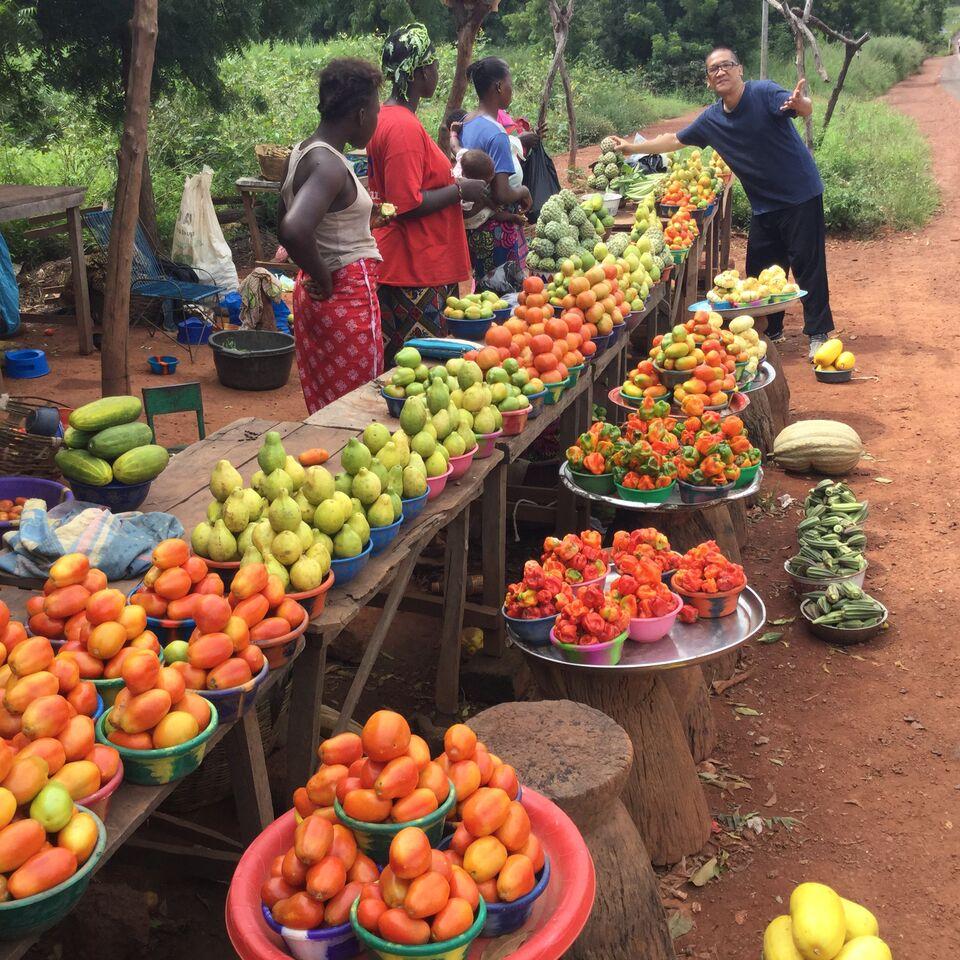
Preserving Precious Nutrients through Curing, Pickling, and Canning
Jan. 4 | 2017
Mali produces excellent fruits and vegetables in-season in such abundance that they cannot be consumed fast enough and are wasted on a regular basis. Yet childhood malnutrition is increasing. Without dependable electricity and adequate refrigeration, even in cities, meat, vegetable, and fruit preservation is a challenge and not common.
Minneapolis Chef Sarah Master came to Bamako, Mali to share methods of food preservation with chefs, staff, and students. She taught several methods of preservation including: curing, smoking, drying, and pickling of meats and similar methods for preserving fruits and vegetables. In collaboration with 3 restaurants available local foods and resources were utilized to create new menu-ready dishes.
Meat: New ways of using the entire animal (i.e., fish, lamb and goat) were explored. As an example, a whole goat was purchased at the live animal market, slaughtered, cut up, and smoked for quick sandwiches as well as using the liver to make pate for the spread. Market vegetables (e.g., carrot, okra, green pepper, and onion) were pickled to use as a condiment. Methods of preparing meats combined with vegetables were experimented with leading to a special dinner event featuring off-cuts and offal. A creative menu consisting of testicles, intestines, tongue, livers, hearts, chicken heads and feet along with vegetables was introduced to staff and delighted guests. “Best meal I have ever tasted” raved a restaurant guest from the United Nations.
Vegetables and Fruits: Fruits and vegetables are easily preserved by drying, canning and pickling. In-season baskets of ripe, fresh fruits and vegetables line the roadways. Limes readily grow in Mali and can be used to raise the acidity level for preservation and canning. Supplies needed are simple and include a heating source, stockpot, mixing bowls, knife, slotted spoon, fork, and sterilized jars with lids.
The recipes for pickling and preservation can be used not only as condiments and compliments to their menus, but also to preserve fresh, nutritious vegetables and fruits from the local markets. The staff and chefs all had concerns about the electricity and refrigeration issues in Bamako. Demonstrating how to preserve the nutrition and freshness in fruits and vegetables was especially important:
“I believe the pickling and preserving will be used regularly….I am eager to return to teach more people how to preserve their meats and vegetables through canning, pickling, smoking, and drying.”
October 2016: This assignment“Preserving Precious Nutrients through Processing, Curing, Smoking, Pickling, Canning,”is part of the Volunteers for Economic Growth Alliance (VEGA) USAID funded Farmer-to-Farmer Special Program Support Project.

Canning Tomatoes
Method: 1. Boil a pot of water; 2. Prep the cold bath; 3. Take off the stems and slice a shallow “X” in the bottom of each; 4; Cook until the skins wrinkles and splits; 5. Lift the tomatoes out of the pot and plunge into the cold water for a few seconds; 6. Transfer the cooled tomatoes to another bowl; 7. Strip the skins from the tomatoes (optional); 8. Chop into small pieces; 9. Using a fork, squeeze the tomatoes to make them smaller and juicier; 10. Bring tomato sauce to simmer over medium heat for about 30 or minutes stirring occasionally until the sauce thickens; 11. Stir in lemon or lime juice and taste to determine sourness; 12. Transfer the sauce into sterilized jars and cover tightly; 13. Place in boiling water for no more than 30 minutes; 14. Allow to cool undisturbed; 15. Results may be stored for up to a year.
Pickling
Ingredients: 4 parts water, 3 parts sugar (white or brown), 2 parts vinegar (any flavor), 1 part salt. Any spicing desired (e.g., garlic, pepper, peppercorns, dried chilis, dill, cloves… ). 1. Sterilize clean jars and lids by boiling covered with water for at least 15 minutes; 2. Combine pickling mixture and to a full boil; 3. Place vegetables in sterilized jars; 4. Pour boiling mixture over the vegetables leaving some space at the top; 5. Seal the lids, cool, and store.


